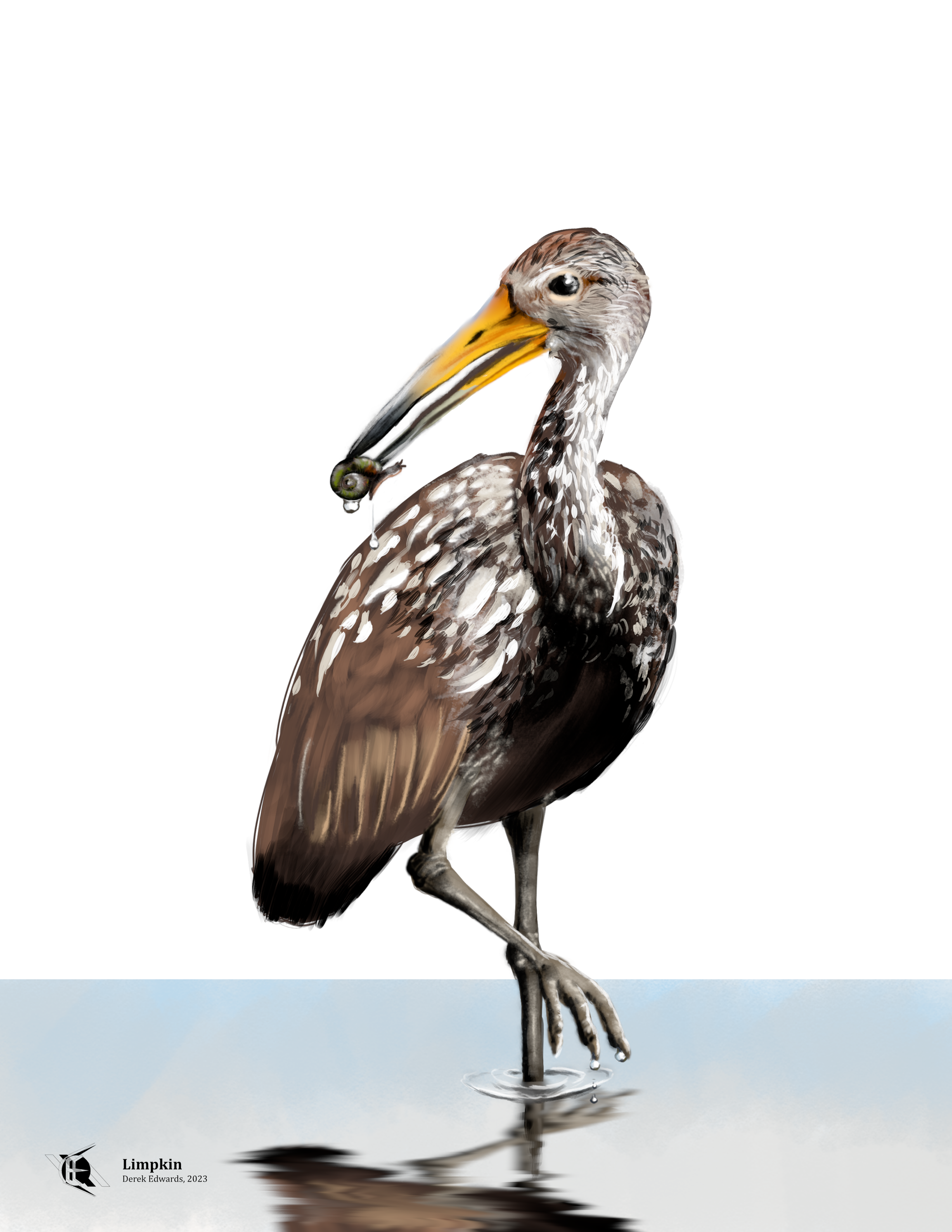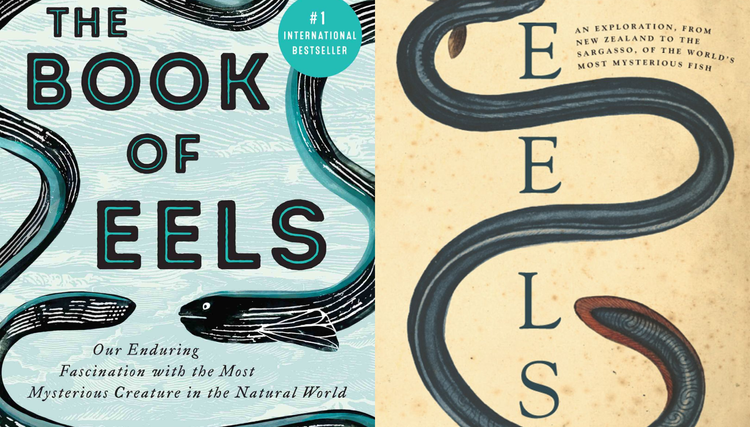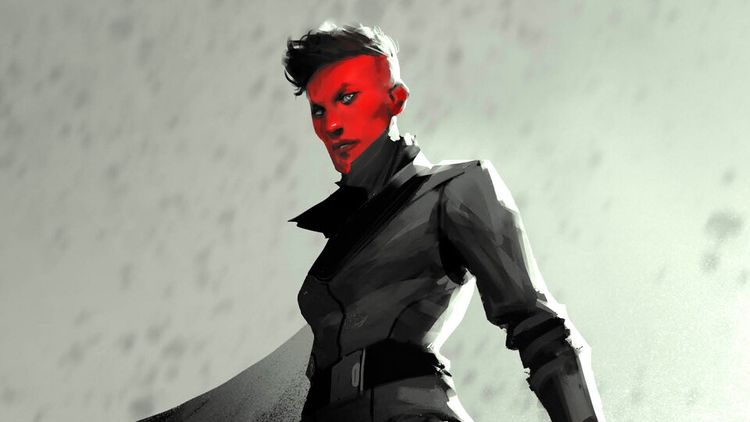
Running Commentary 10/16/2023
Hello,
I'm calling it: no pintail sighting this year. It's mid-October now, and it's getting properly cold out, especially at night, so I'm predicting that most shallow-water ducks that are passing through won't stay long enough for me to catch them, even if I hear of them. Ah well, there's always next Spring to go looking again. And, of course, the bay ducks will be coming down to the bigger lakes and rivers soon.
Anyway...
Watching...
Loki
I realized, as I was putting the finishing touches on this week's newsletter, that I did not watch the new episode of Loki, and I don't have the time to now. Sorry about that. I'll cover two episodes next week.
BattleBots
Whiplash earned the second play-in slot in the Golden Bolt bracket. They are basically the only top-tier bot unconcerned with dealing damage; even other control bots like Claw Viper still depend on banging their opponents into the walls. Whiplash is more about placing bots such that their wheels can't contact the ground, as it did several times in it run here. The fight between Whiplash and Fusion was honestly a perfect demonstration of how both bots work: Whiplash outmaneuvering its opponent and leaning them up against the wall, and Fusion immediately catching itself on fire.
Black Dragon did not catch on fire, not that they typically care if they do anyway. Blip, the first bot they faced, seemed to intercept their flaming curse. Blip had a lot of tough match-ups last season and that continued here. Hopefully next time they get more even matches.
Mad Catter had a good showing; even though they lost their second fight, they won their first in one hit.
The final fight between Whiplash and Black Dragon was as close to a tie as I can remember. I suppose the judges decision came down to that Black Dragon lost weapon functionality, while Whiplash only lost mobility in some of its wheels. Still, I'm glad I'm not a judge, as are everyone else who watched that fight.
Reading...

The Anomaly by Hervé Le Tellier
Science fiction really has come a long way in terms of cultural prominence. Early works by Jules Verne and Mary Shelley get some recognition as classic literature, but much of the sci-fi writing of the 20th Century, even the really good examples, got and get sort of siloed off from mainstream culture. Nowadays there's less of a mainstream culture generally, but insofar as there is one still it's rather dominated by sci-fi, or sci-fi-adjacent things: Marvel, Star Wars, Stranger Things, Hunger Games, Batman. Every streaming service has some sort of tentpole sci-fi property or two. But that's all mass culture, the sort of thing that only gets nominated for best special effects, right?
I found The Anomaly (originally published in French as L'Anomalie) on the shortlist for the 2023 Arthur C. Clarke Award. The Clarke Award is given to the best science fiction book published in the United Kingdom in the past year, as Adriana Hunter's English translation of L'Anomalie was in 2022. But a few years before the novel won the 2020 Prix Goncourt, which is the most prestigious book prize in France. Not the most prestigious science fiction book prize; the most prestigious book prize. The author, Hervé Le Tellier, isn't even a science fiction writer; he's a writer of literary fiction and poetry. But The Anomaly is absolutely science fiction; it's not even particularly classy science fiction, with a premise that seems more at home on a network TV show: a passenger plane lands, then lands again months later, with the same pilot and same passengers completing the same flight, having somehow been duplicated across time. Le Tellier doesn't do a whole lot to try to explain how the plane came to be duplicated. He just asserts that it was and then explores how such an even might influence the world, and the people aboard the plane(s). In this way The Anomaly works as an interesting work of outsider art, an earnest attempt at genre fiction by a literary author.
The book is organized into vignettes, showing scenes of roughly a dozen of the airplane passengers, first those from the first landing, then those from the second being taken into government custody upon disembarking, then of each duplicate pair meeting and trying to figure out how their lives will merge, or won't. Most of the characters are really well put together, and the scenarios and dilemmas they face once they learn they're doubled are all both very believable and unique from one another. I will say that I didn't care for one character: a hired assassin called "Blake" who a) felt like something from out of a different book and b) didn't do anything particularly interesting in this one. The fact that everyone else in the plane were ordinary people (except, arguably, the up-and-coming pop star) made Blake stick out, but not in a positive way.
Besides the passengers, the book also tells of an FBI agent and two MIT scientists tasked with figuring out what happened and how to address the public. The scientists ultimately can only speculate. The agent's first move is to gather religious leaders to ensure that the mysterious doppelgangers wouldn't be considered demon-spawn or anything; the clerics all agree that, no, they wouldn't, but once the news of the duplicates goes public, several fringe sects do indeed start calling for their deaths, in a really observant look at how little influence faith leaders have over the faithful. The broader world response to the duplicates forms the backdrop for hte final quarter of the book, and leads into the final scene, which I won't spoil. (One thing I will note about this part is that while real figures such as Emmanuel Macron and Xi Jinping appear in the book, the American president does not appear to be Donald Trump, who held office when the book was published; rather, the president is described as a rather paranoid man who looks like Tom Hanks.)
Obviously, a book that has won several major awards already has more recommendation that I could give it, but I'll give my take anyway: The Anomaly isn't a new favorite, but it was truly fascinating to see such an out-there premise in the hands of a French literary author. If you're interested to see that for yourself, give the book a try.

Bird of the Week
Okay, so after last week's weirdness, we're back to a bird. This species is, in fact, the best birding sighting I've had all year, which I mentioned a couple weeks ago: the Limpkin.
The limpkin is a large wading bird, most closely related to the cranes and rails, though still quite distinct from either. It looks something like a heron with a curvier bill, or an ibis with a straighter bill. It is a dull chocolate brown with white spots and dapples; specimens from further south have less spots than northern birds. Limpkins are usually found from the shores of the Gulf of Mexico and the Carribean down though much of South America, though this year they've been spotted much further north, such as the limpkin I saw in Hastings or those others have seen in Michigan's Thumb region. Many others have been found in neighboring states this year, possibly attracted by introduced snails and mussels that are also not native to the Great Lakes region.1
Limpkins are very fond of snails. It is generally said that they eat only apple snails (large freshwater snails of the genus Ampullaria) and, while that seems unlikely, studies of the contents of birds stomachs by the U.S. Biological Survey about a century ago did indeed find little besides mollusc flesh.2 I suppose snails are pretty rich in protein and vitamins. People have eaten snails for a long time, mostly out of desperation, though some cuisines have featured snails as classy fare, most famously the French dish known as escargot. Snails are not generally popular food in North America, where the local populations of snails aren't usually considered edible, and where import of snails for farm-rearing is tightly restricted out of concern of escapees becoming invasive pests in waterways.3
After the western gull, this is the second bird I've featured that could be considered a movie star. The limpkin hasn't featured much on-screen, but its call – a strange, inhuman scream4 – has been used as jungle ambiance in films from old Tarzan movies to The Incredibles, and as the voice of the chimaeric hyppogriff in the Harry Potter franchise.5 In many other languages, limpkins are named an onomatopoeic imitation of their wail, as in the Spanish "carrao". In English they are sometimes also called "crying birds". The name "limpkin" literally refers to a limping thing; the bird is often seen to walk in an unsteady, jerky manner over uneven, semisolid marsh ground. To science, it is Aramus guarauna, the generic name being originally given to an unknown type of heron in the writings of Hesychius of Alexandria, an ancient Greek lexicographer, and the specific name coming from the Tupí word for "black bird", which refers not to black birds but to some sort of marsh bird, possibly the limpkin or possibly something else.6
- DeVore, Sheryl. “‘Invasion’ of Tropical Birds Known as Limpkins Reported in Illinois; Invasive Snails May Be Attractive Food Source, Experts Say.” Chicago Tribune, October 3, 2023. https://www.chicagotribune.com/news/environment/ct-illinois-limpkins-20231003-3xxzn4yu35dxzi52a2iiumg4ra-story.html.
- Cottam, Clarence. “Food of the Limpkin.” The Wilson Bulletin 48, no. 1 (1936): 11–13. https://sora.unm.edu/node/125929
- Graber, Cynthia. “Gastropod on Gastropods.” Gastropod. Last modified September 15, 2021. https://gastropod.com/gastropod-on-gastropods/.
- Chiappone, "Chia" Cory. "ML455551361 Limpkin." MacCauley Library (2022) https://macaulaylibrary.org/asset/455551361
- Ramanujan, Krishna. “From ‘Harry Potter’ to ‘The Incredibles,’ Blockbuster Movies Turn to Cornell Lab of Ornithology for Blockbuster Sounds.” Cornell Chronicle. (2005) https://news.cornell.edu/stories/2005/12/blockbuster-movies-turn-lab-ornithology-blockbuster-sounds.
- Jobling, J. A. (editor). The Key to Scientific Names in Birds of the World (S. M. Billerman et al. editors), Cornell Laboratory of Ornithology, Ithaca.
Curation Links
The Goose Who Wore Nikes, and the Mystery of Who Murdered Him | Cara Giaimo, Atlas Obscura
“At the time, Jessica wasn’t necessarily impressed. “I was at the age of being constantly embarrassed by my family,” she says. She couldn’t have predicted Andy’s meteoric rise and devastating fall—that the Footless Goose would become first an international superstar, then the victim of a brutal murder, then the subject of a mysterious cover-up. She couldn’t have known that 25 years later, she would be the Fleming who took up the mantle, fighting through a web of mystery and intrigue to bring Andy justice.”
2023 Winners | Jack Zhi, et al., Bird Photographer of the Year
"With over 23,000 images entered into the competition this year, Bird Photographer of the Year is pleased to present our winners. Celebrating bird life from around the world, these images comprise some of the most incredible bird photos in the world taken by talented photographers"
The Early Days of American English | Rosemarie Ostler, Lapham's Quarterly
Excerpted from Ostler’s The United States of English: The American Language from Colonial Times to the Twenty-First Century, a look at the way American English first diverged from British English. Some of it was Americans changing things, some of it was Americans keeping things that the British changed, some of it was Americans who didn’t speak English adding things.
Einstein-Rosen | Olga Osorio
[FICTION] [VIDEO] “Summer of 1982. Teo claims he has found a wormhole. His brother Óscar does not believe him - at least not for now.” It’s in Spanish, but there are English subtitles. (9 minutes)
See the full archive of curations on Notion






Member Commentary